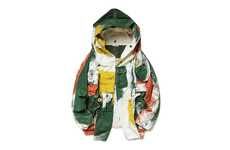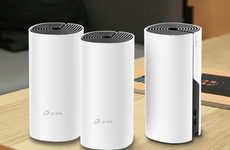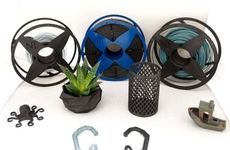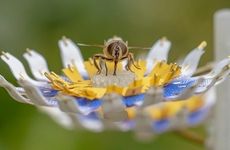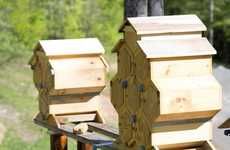
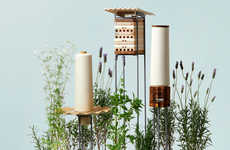


Brands are supplementing existing infrastructure with eco decisions
Trend – Brands and individuals alike are concerned with preserving ecological life in urban environments through design-forward accessories that can be added to architectural infrastructures or inserted as simple features in the home. Their focus is to offer support to the dwindling biosphere within the concrete parameters of the city, thus reducing ecological footprints and creating welcoming habitats. These small but impactful solutions promote biodiversity, while also being affordable and having easily implementable designs.
Insight – As climate change is dominating public discourse, individuals are paying close attention to their consumption habits and opting in for brands that have a mandate for sustainability. The guilt and stress that people are beginning to feel in regards to overconsumption has resulted in a growing consumer demand for businesses and institutions to take responsibility for their impact on the environment. While these accessories are supplementary to urban infrastructure or the home environment, they also have a soothing and empowering effect on communities, businesses, and individuals.
Insight – As climate change is dominating public discourse, individuals are paying close attention to their consumption habits and opting in for brands that have a mandate for sustainability. The guilt and stress that people are beginning to feel in regards to overconsumption has resulted in a growing consumer demand for businesses and institutions to take responsibility for their impact on the environment. While these accessories are supplementary to urban infrastructure or the home environment, they also have a soothing and empowering effect on communities, businesses, and individuals.
Workshop Question - What kind of biodiversifying product could your company adopt to benefit the ecological footprint of its community?
Trend Themes
1. Eco-minded Urban Accessories - Brands are supplementing existing infrastructure with eco decisions focused on offering support to the dwindling biosphere within the concrete parameters of the city.
2. Insect Accommodation - Designers are creating structures and houses designed to provide shelter, food, and water to bees and insects in urban environments.
3. Human-threat Identifying Tags - Designers are creating high-tech bio-logging tags to identify human threats and assist in survival for animals including humpback whales and collared peccaries.
Industry Implications
1. Environmental Conservation - Innovative solutions that offer support to the dwindling biosphere and its ecosystems in urban environments.
2. Sustainable Design - Promoting biodiversity through eco-luxury design products that are affordable and easy to implement and supplement existing infrastructure.
3. Robotics and Sensing Tech - Designing various sensing tech products, including bio-logging tags for humpback whales and collared peccaries, which helps the assisted mammals to detect human threats and be prepared should they need to fight-or-flight.
4 Featured, 34 Examples:
106,124 Total Clicks
Date Range:
Feb 19 — May 19
Trending:
Warm
Consumer Insight Topics:






